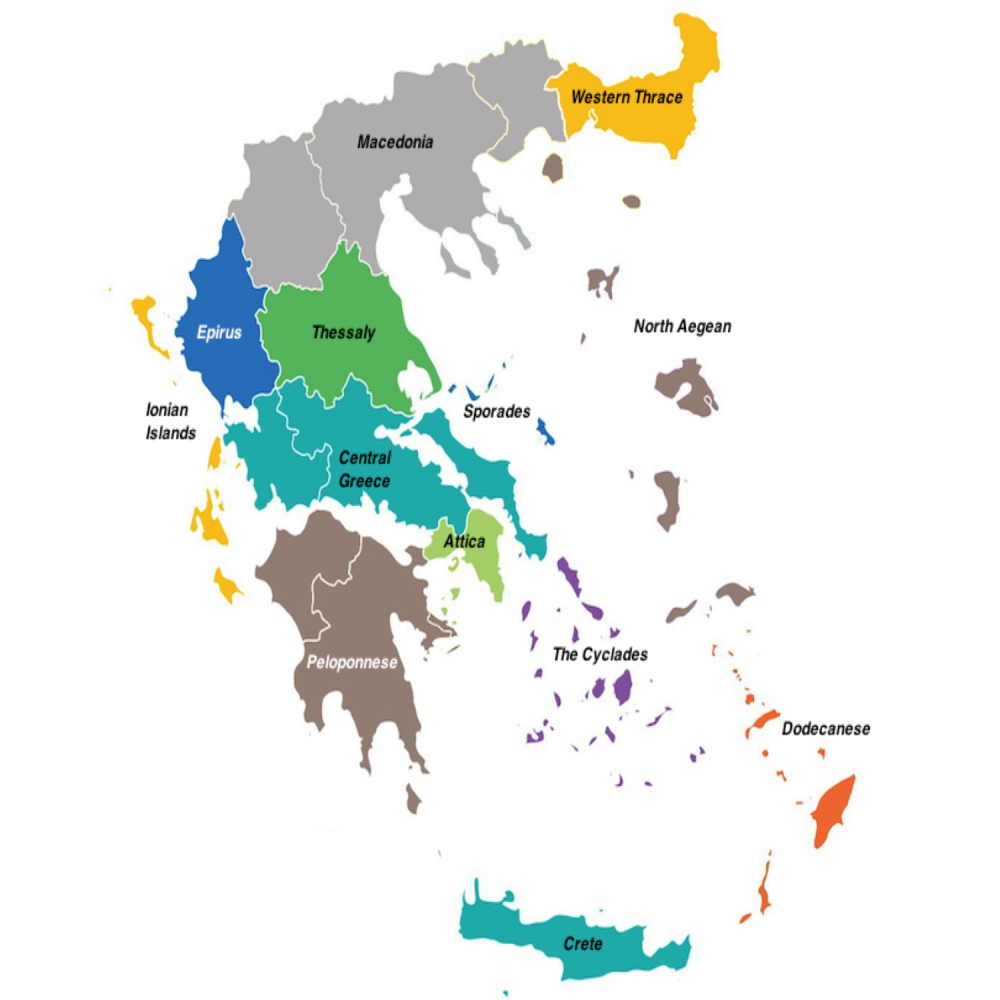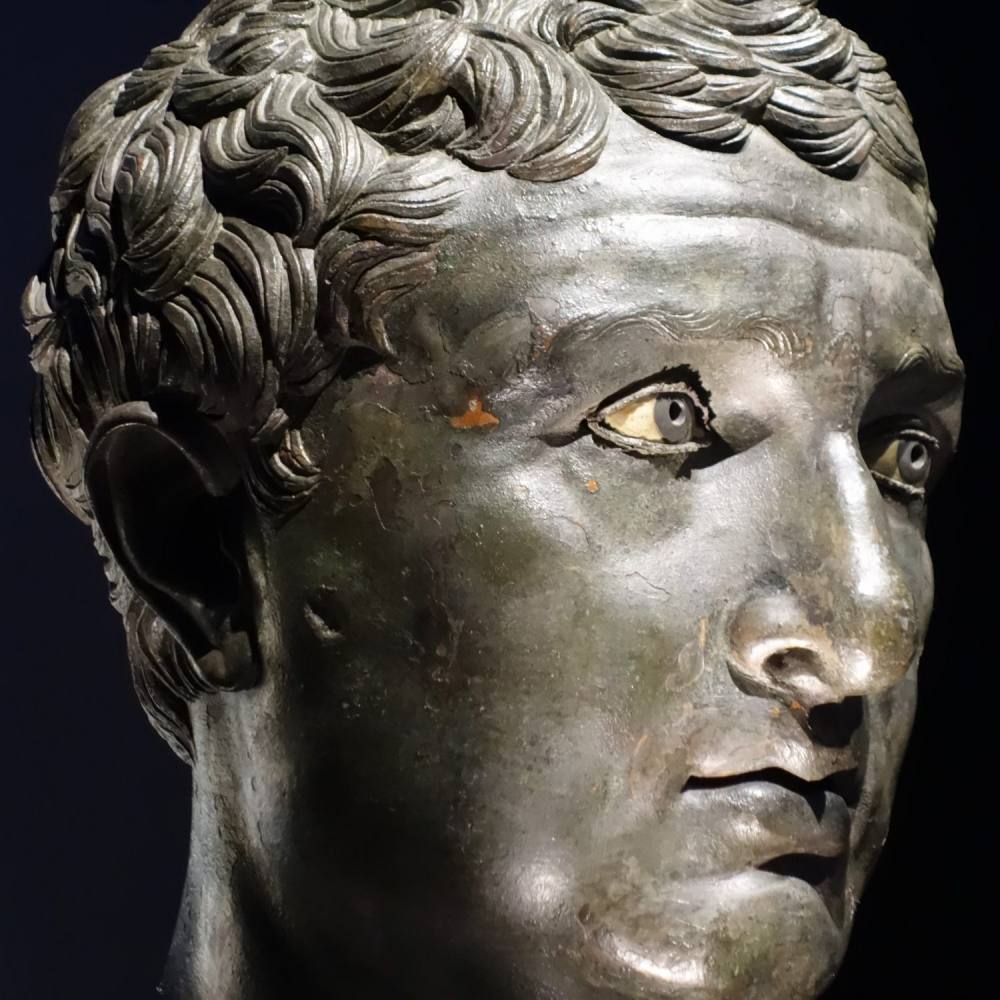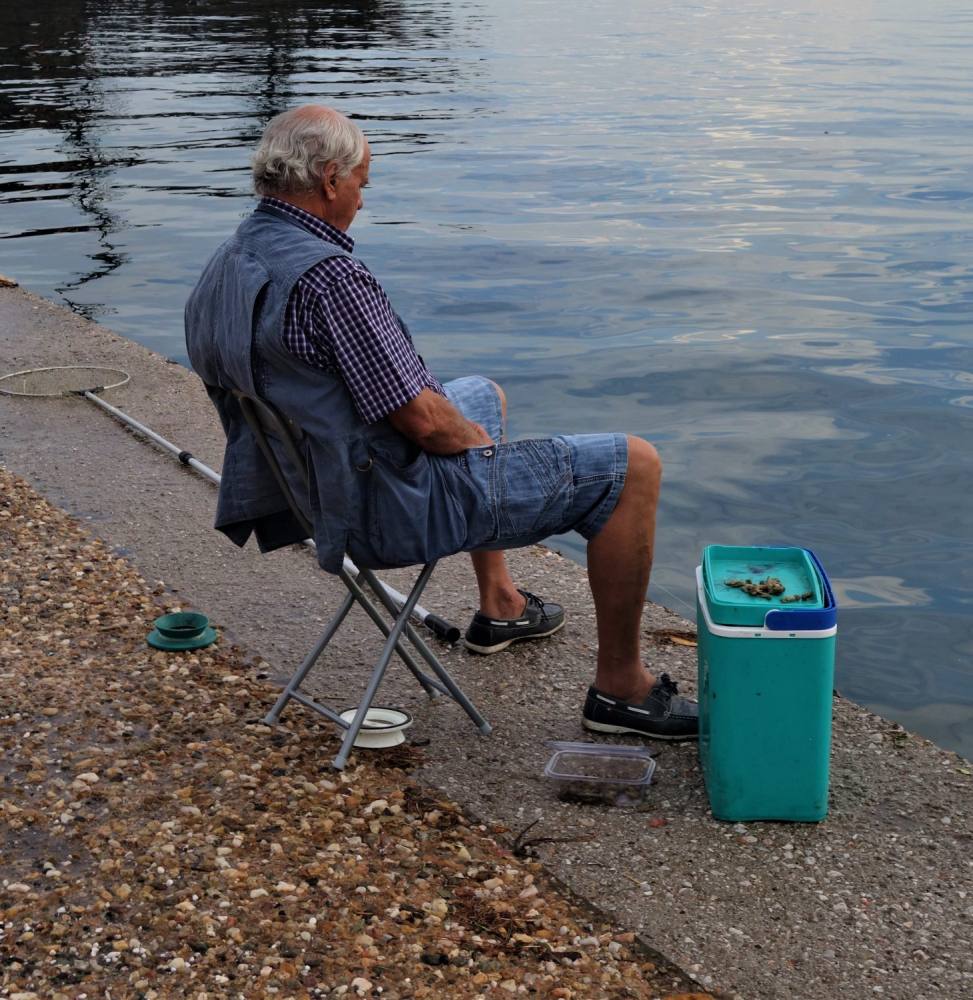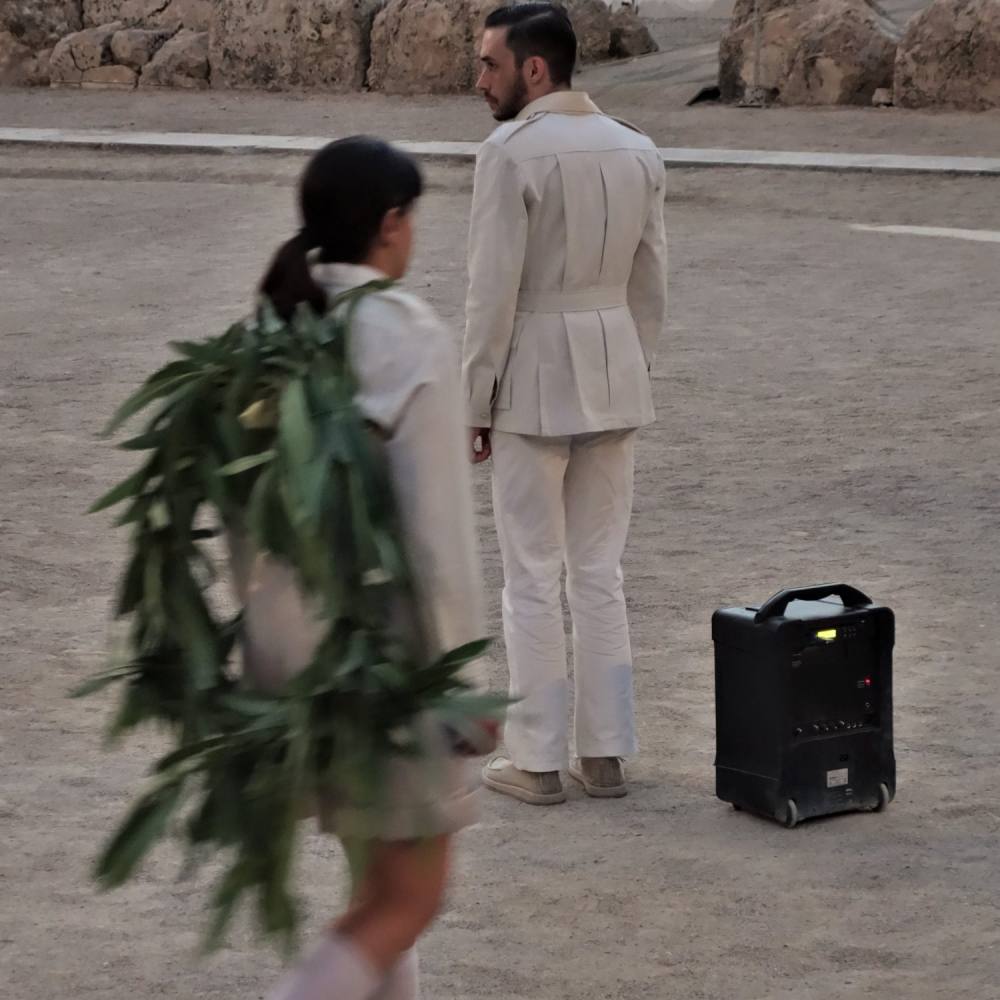Greece
Strong connection
Being born in the suburbs of Australian capital cities in the mid-to-late 1950’s, both my wife and I grew up with Greeks and Italians.
Her best friend at high school in Sydney was Greek. She went to the Greek Club and learnt Greek dancing. Her childhood dream was to be an archaeologist. She’s been a philhellene for most of her life.
I went to high school in Brisbane with Greeks whose names ended in ‘s’ and Italians whose names ended in vowels. My closest Greek friend was hilarious. He had this passion and energy that I found infectious as a mongrel of German/ English/ Irish/ Polish extraction growing up in 1970s-era Queensland. He helped give me a sense of life beyond the ‘burbs of Brissie.
It was 2006 when my wife and I first travelled to Greece together. As well as feeling a sense of awe and having a lot of fun, we both felt very comfortable there. Our childhood experiences had laid the basis for a strong connection to be made. We’ve done four trips to date and hope to keep going back for as long as we are able.
Ancient Greece
In her 2015 book ‘The Ancient Greeks – Ten Ways They Shaped The Modern World’, Edith Hall starts by outlining ten characteristics. She describes them as
…a cluster of brilliant qualities that are difficult to identify in combination and in such concentration elsewhere in Mediterranean or Near Eastern antiquity.
She says the Ancient Greeks were:
- seagoing
- suspicious of authority
- individualistic
- inquiring
- open to new ideas
- witty
- competitive
- admiring of excellence and talent
- articulate, and
- addicted to pleasure.
The Ancient Greek architecture, material objects and artworks we’ve seen in our travels bear this out. To our eyes the Cycladic figures of 3-2,000 BC have a very ‘modern’ aesthetic. It’s a simple but powerful example of how the sensibilities of Ancient Greeks resonate with us to this day.
Ancient Greece
In her 2015 book ‘The Ancient Greeks – Ten Ways They Shaped The Modern World’, Edith Hall starts by outlining ten characteristics. She describes them as
…a cluster of brilliant qualities that are difficult to identify in combination and in such concentration elsewhere in Mediterranean or Near Eastern antiquity.
She says the Ancient Greeks were:
- seagoing
- suspicious of authority
- individualistic
- inquiring
- open to new ideas
- witty
- competitive
- admiring of excellence and talent
- articulate, and
- addicted to pleasure.
The Ancient Greek architecture, material objects and artworks we’ve seen in our travels bear this out. To our eyes the Cycladic figures of 3-2,000 BC have a very ‘modern’ aesthetic. It’s a simple but powerful example of how the sensibilities of Ancient Greeks resonate with us to this day.
Our Greece
The Ancient Greeks as described by Edith Hall are our kind of people. As were the Greek kids we went to school with. Through our travels, perhaps unconsciously at first, we’ve sought out these characteristics in the Greece of today.
Most visibly they can be seen in vestiges of the ancients that survive. The iconic sites of Delphi, Knossos, Olympia, and the Acropolis are very well known. There are however many, many more sites that are amazing in their own ways and have rewarded our repeat visits and slower journeys. There are wonderful museums to be wandered, both large and small.
The cuisine in Greece is a delight. You can see it infused by many of Edith Hall’s ten characteristics. It’s not just the food itself, but the whole culture around eating and the ethos of welcome and hospitality called ‘philoxenia’.
The natural environment is distinctive. The light, the water, the rock, and the way Greeks respond to these elements. Whitewashed buildings, brightly-painted chairs and tables, creeping bougainvillea. On many of the days we’ve spent travelling we’ve looked around and thought, ‘we could only be in Greece’.
Then there’s the way that life in Greece is fast and slow and intense and relaxed. It is a land of contradiction that comes from mixing so many “brilliant qualities”.
Travelling in Greece
Greece has thirteen main regions (see coloured map). Most travel guides are organised around some variation of these. We’ve done four trips to date staying in 26 locations (see Google map).
We’ve planned our travelling by thinking about the regions in three broad categories i.e. the island groups, the Peloponnese, and the mainland.
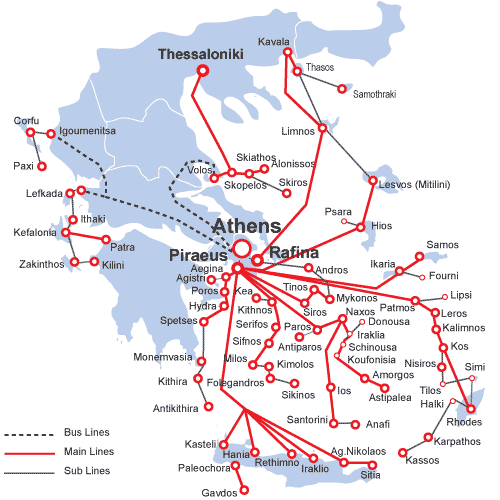
The Island Groups
Island-hopping using the ferry system is a great way to travel in Greece. Ferry connections within the island groups are good. Connections between them are generally not so good because it’s a ‘hub and spoke’ model with Piraeus, the port of Athens, being the main hub. This pattern shows clearly in the ferry route map. We’ve embraced that constraint and let it influence how we travel by ferry. We’ve found it best to choose an island group like the Dodecanese or Cyclades and explore within.
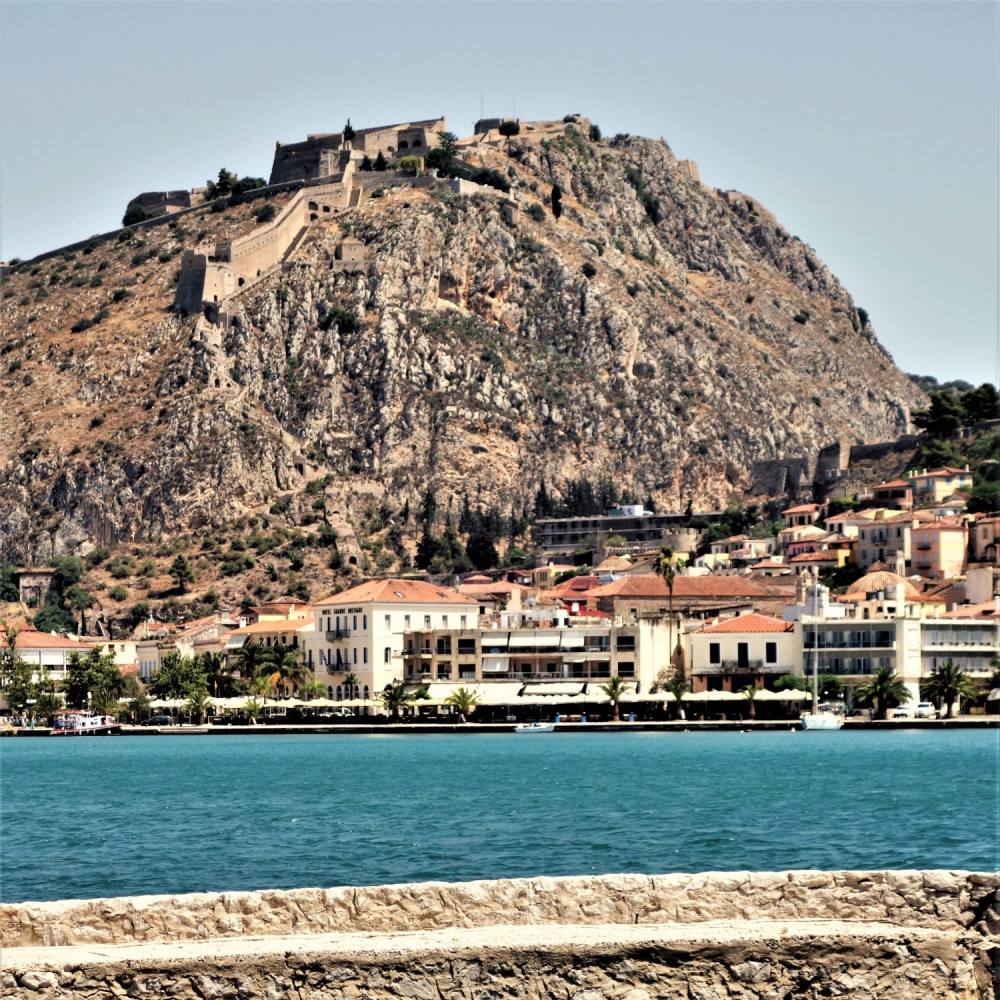
The Peloponnese
The Peloponnese is a destination in itself. It feels separate, like a big island. Five of Greece’s fifteen World Heritage sites are in this region. Olympia, Bassae, Mystras, Mycenae and Tiryns, and Epidavros. It’s mountainous which gives rise to dramatic scenery as well as distinctive sub-regional cultures such as on the Mani peninsula. There are some great beaches, particularly in the south, and elegant towns including Nafplio. If you only have one chance to visit Greece, make it to the Peloponnese.
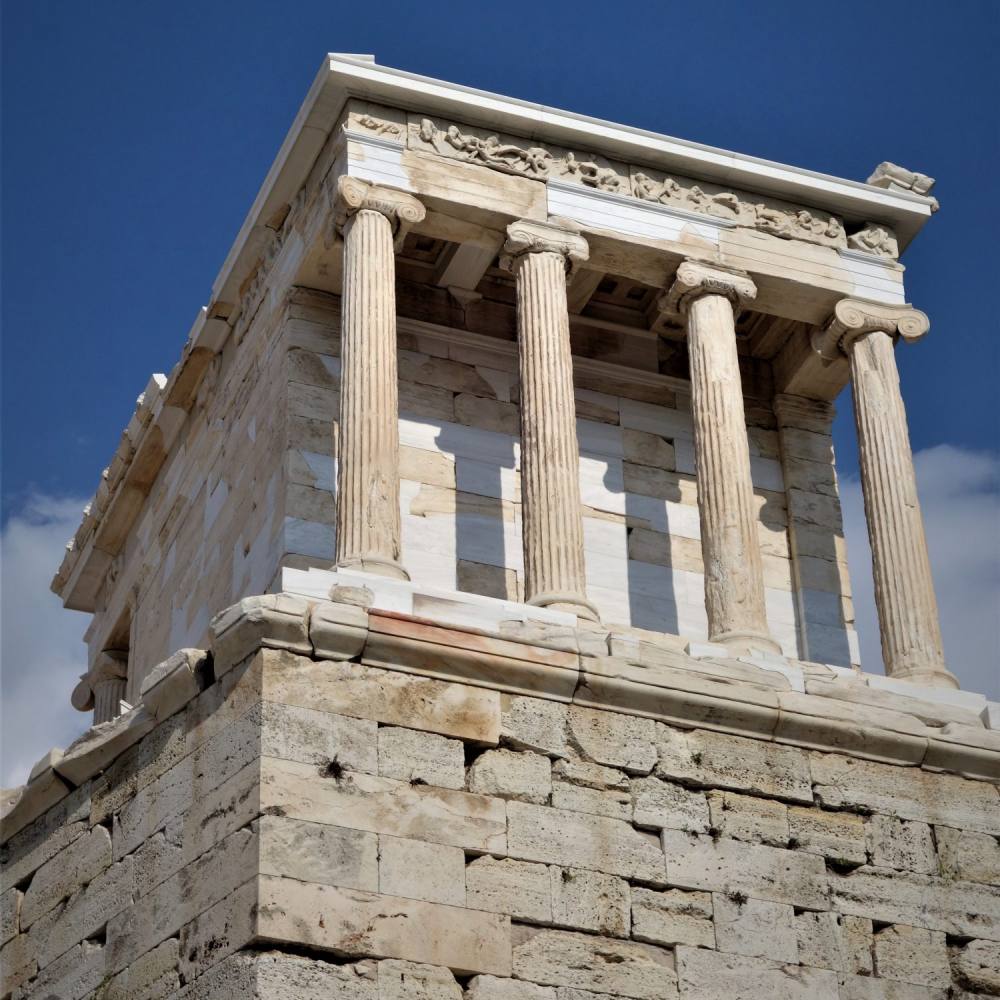
The Mainland
Our travelling on mainland Greece has been about getting to and from the major points of interest. We’ve always started and / or ended in Athens, then planned to get to places like Delphi and Meteora in Central Greece, Veria and Thessaloniki in Northern Greece. Buses (and less so trains) can get you from A to B on their terms, but having a car is really the way to go. There are plenty of cool things to do around and between the iconic destinations that make slow travelling worthwhile.
Our Experience
We’ve done four Greece trips to date and our Trip blogs have all the detail. In summary:
- 2018 – Driving through central and northern Greece, flying from Thessaloniki to Heraklion to explore Central Crete, then island-hopping through the Cycladic islands of Santorini and Milos and back to Athens.
- 2014 – Spending a few days in Athens before picking up a car and driving to Delphi then ‘circumnavigating’ the Peloponnesian Peninsula.
- 2008 – Flying from Rome to Chania to explore Western Crete then island-hopping through the Cycladic islands of Santorini, Folegandros, Naxos and back to Athens.
- 2006 – Starting in Athens, flying to Rhodes, island-hopping through the Dodecanese islands of Tilos, Symi, Lispi and Patmos, then on to Samos and back to Athens.
Across these trips we’ve built up some experience of travelling in the Island Groups, the Peloponnese and the Mainland which is summarised below.
Our trips
The Island Groups
- Dodecanese
- Crete
- Cyclades
- Santorini (2008, 2018)
- Folegandros
- Milos
- Naxos (incl. Delos)
The Peloponnese
The Mainland
- Athens
- Delphi
- Trikala (Meteora)
- Veria
- Thessaloniki
Over time we’ve also sought out sites that represent the various Historical Eras of Greece.
Minoan civilisation was centred in Crete. Mycenaen civilisation was centred in the Peloponnese. Ruins from the Geometric and Archaic periods, which include the so called Greek ‘Dark Ages’, are harder to come by. Greece’s heritage is richest from the Classical period in Athens and surrounds, Delphi and Olympia, and several other fantastic sites in the Peloponnese and Cyclades. Key sites from the Hellenistic period are in Northern Greece.
The sites and museums that we’ve visited, along with links to relevant Trip blogs, are summarised below.

